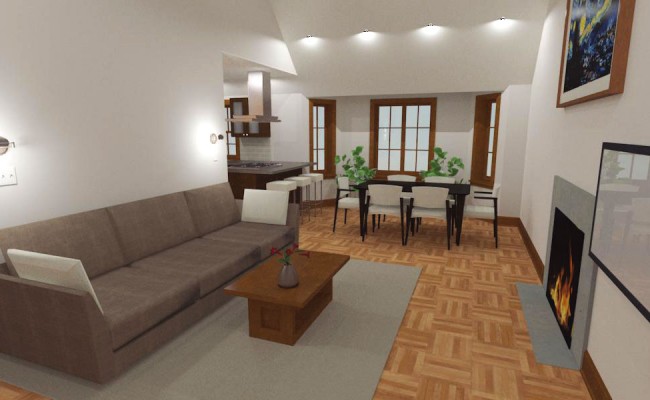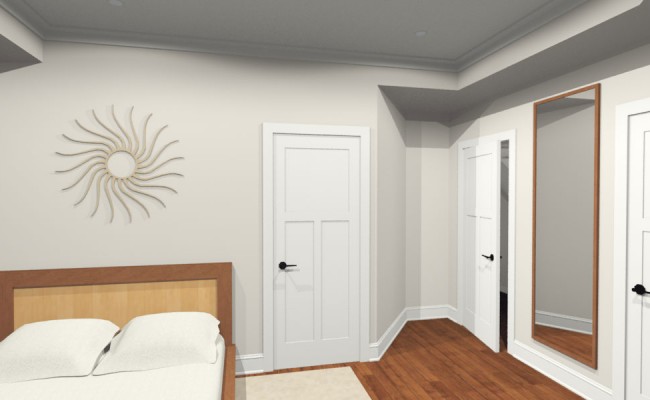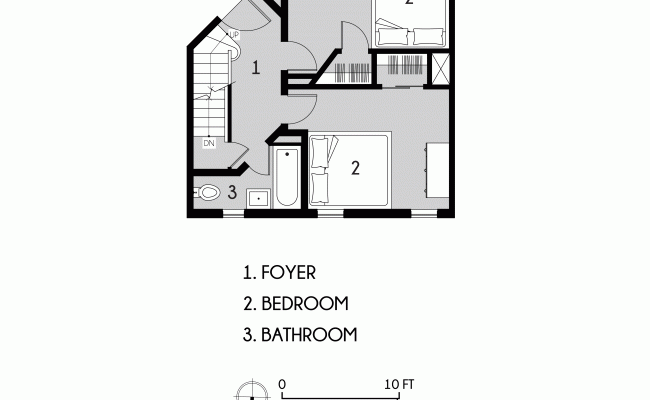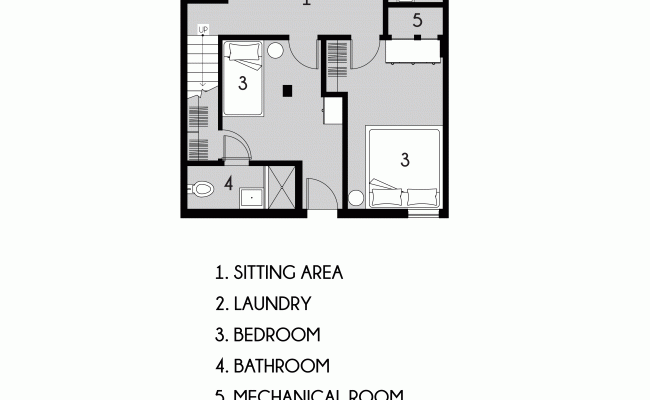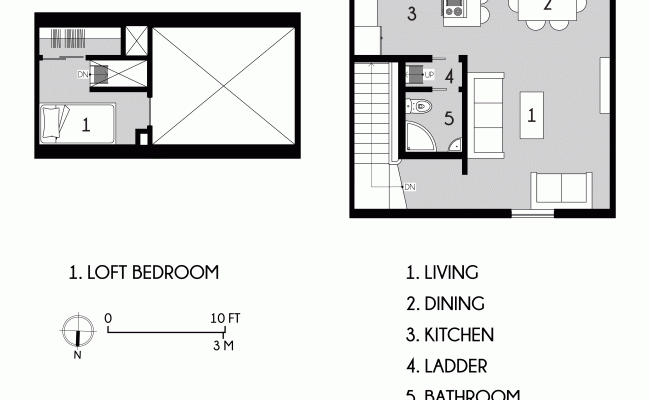Updating a Washington DC apartment to maximize income potential with more bedrooms and an open living/kitchen space.
When purchased, this unique apartment in DC was viewed as an investment opportunity for the owners. In order to reach its maximum potential, a renovation was necessary to open up some spaces while adding bedrooms in others. The existing structure consisted of a 3-1/2 floor 2-bedroom unit with Arts and Crafts influences.
This project was divided into a series of phases and budget was of primary importance, so design and construction efficiencies were critical. The phases were developed in order to allow tenants to occupy the space as early as possible and during subsequent construction. The first phase therefore focused on the existing bedrooms and updating mechanical systems. The basement was demolished in order to install the updated forced-air system for the entire basement and ground floor bedrooms. The basement’s ceiling beams were exposed with sound attenuating insulation placed in between to provide privacy for the bedrooms above. All basement light fixtures, ductwork and any partitions for this phase were designed to be located for the final layout to minimize changes during subsequent phases. Low ceiling heights required creative basement lighting solutions. The bedrooms additionally received new closet space designed to maximize storage while retaining ample bedroom square footage.
Phase 2 installed one bedroom in the basement. This utilized the existing bathroom and provided additional income generation, but didn’t require full construction of the remaining basement buildout. Plywood panel walls were offered as a finish selection during this stage for durable, cost effective wall alternatives to provide an accent in specific locations.
Phase 3 focused on the public living spaces located on the second floor. The existing kitchen was small and inefficient, so by removing walls and incorporating a bar countertop, the new design increases the sense of openness between the living and kitchen areas while maximizing kitchen storage. The loft area above the living space is activated during this phase by the addition of a ladder room. This room allows the loft to become completely separated from the public areas when needed. Coordination with the client found opportunities for work they could complete themselves in order to lower finish costs for the loft areas. A forced air system for this public area is added to the attic during this phase.
The final phase, Phase 4, added another bedroom and bathroom to the basement. Each bedroom in the basement had a private bathroom, but there was enough remaining space to allow a small sitting area to provide living space separate from the rest of the house.

